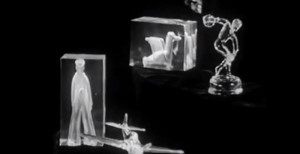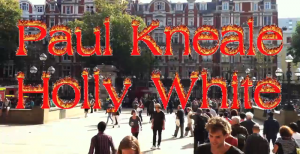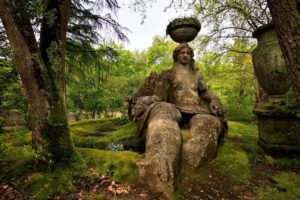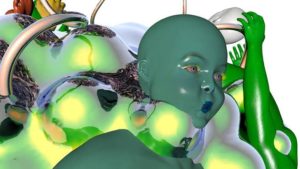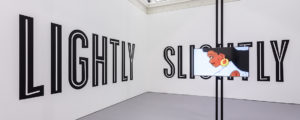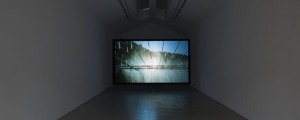Irish artist Gerard Byrne‘s first major UK survey at the Whitechapel Gallery, A state of
neutral pleasure, invites discussion of media and sexuality. On entering the lens-based practitioner’s show, one finds themselves in a large darkened room lit by five hanging projectors – each beaming onto a slightly tilted, rectangular white block. Across the floor plan each of these screens is angled against each other in what creates diverging plains of sight.

Becoming a work in itself, the curatorial installation allows for different works to be screened in a schedule of films proposed as “a continuous project, altered daily,” themed round subject titles like ‘thing,’ ‘man’ and ‘femmes.’ With pupils darting, a TV style sitcom titled ‘A man and a woman make love’ (2012), shows actors recreating a discussion about orgasms between Surrealists in the 1920s, such as artist Yves Tanguy and writer André Breton. It displays various shots of the same conversation at once -close ups here, wide angles there -leaving the eyes restless but the sub-conscious immersed.

Then all screens, bar one, are switched off and out of the darkness appears Jean-Paul Sartre. Played by actor Michel Debrane, the philosopher puffs incessantly on a pipe, while recounting his relationship with Simone De Beauvoir, playing power games with women and cuckolding with a femme fatale. The chauvinist has his audience’s full attention. At times, though, the subtitles disappear and the viewer loses the ability to fully comprehend the conversation. Byrne alerts us to the power of language, the influence of media and, as Sartre calls says, the weight the look has to instigate desire.

Upstairs, this investigation into how ‘sex sells’ is less subtle. New Sexual Lifestyles (2003), re-enacts a 1973 round table discussion printed in Playboy magazine between famous figures in the sexual liberation movement. They revel in the breaking of taboos while lambasting Al Goldstein, editor of Screw, for his moronic sexism. The series of monitors, facing each other, leave you sitting in a chair similar in design to the one in the video, watching others watching the same film from different angles, while surrounded by large scale photographs of the architecture where the panel discussion was filmed.

In both cases, the audience observes itself as much as possible in Byrne’s work. We watch how others are seduced by the show, the different formats of viewing. Original prints of the magazine spreads next to the film show the stories’ translation across media and across time. How yesterday’s history is written today. Elsewhere, Byrne observes media distribution, taking dead black and white stills of contemporary news kiosks, juxtaposing them with small, colourful moving projections on the side of plinths; they not only questioning the status of one format over the other but the relevance of film, theatre and photography’s hierarchy altogether.

In a clear homage to his hero, playwright Samuel Beckett, Byrne starkly illuminates dying trees with intense yellow and blue lights in a series of photographs that take scenes from Waiting For Godot as their inspiration, itself inspired by Caspar David Friedrich’s painting Observing The Moon (1824). The point being sexuality hasn’t really changed, and neither have the narratives, but the way we tell them? That’s a different story.
Gerard Byrne is at the Whitechapel Gallery, London till the 8th of March, 2013.

